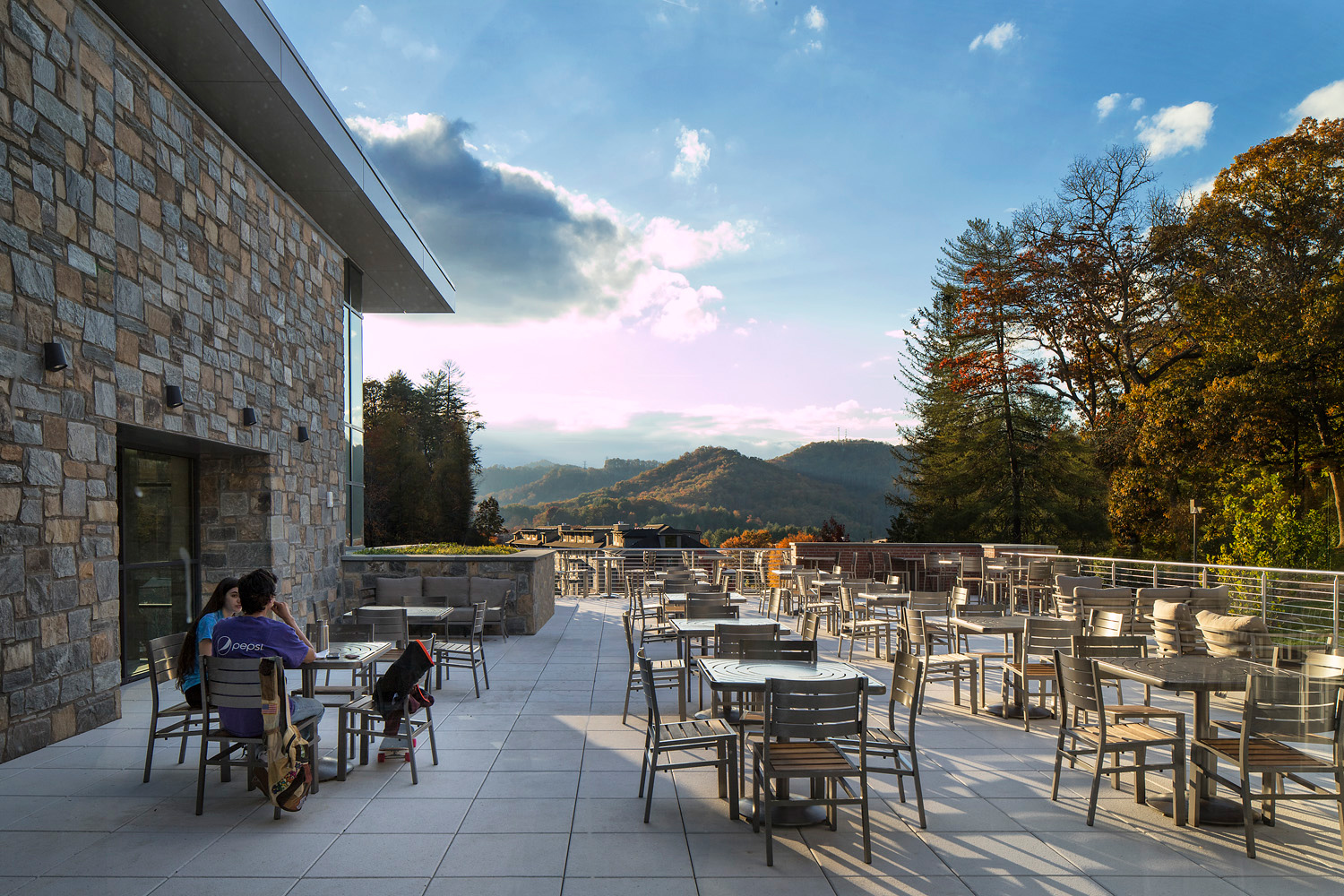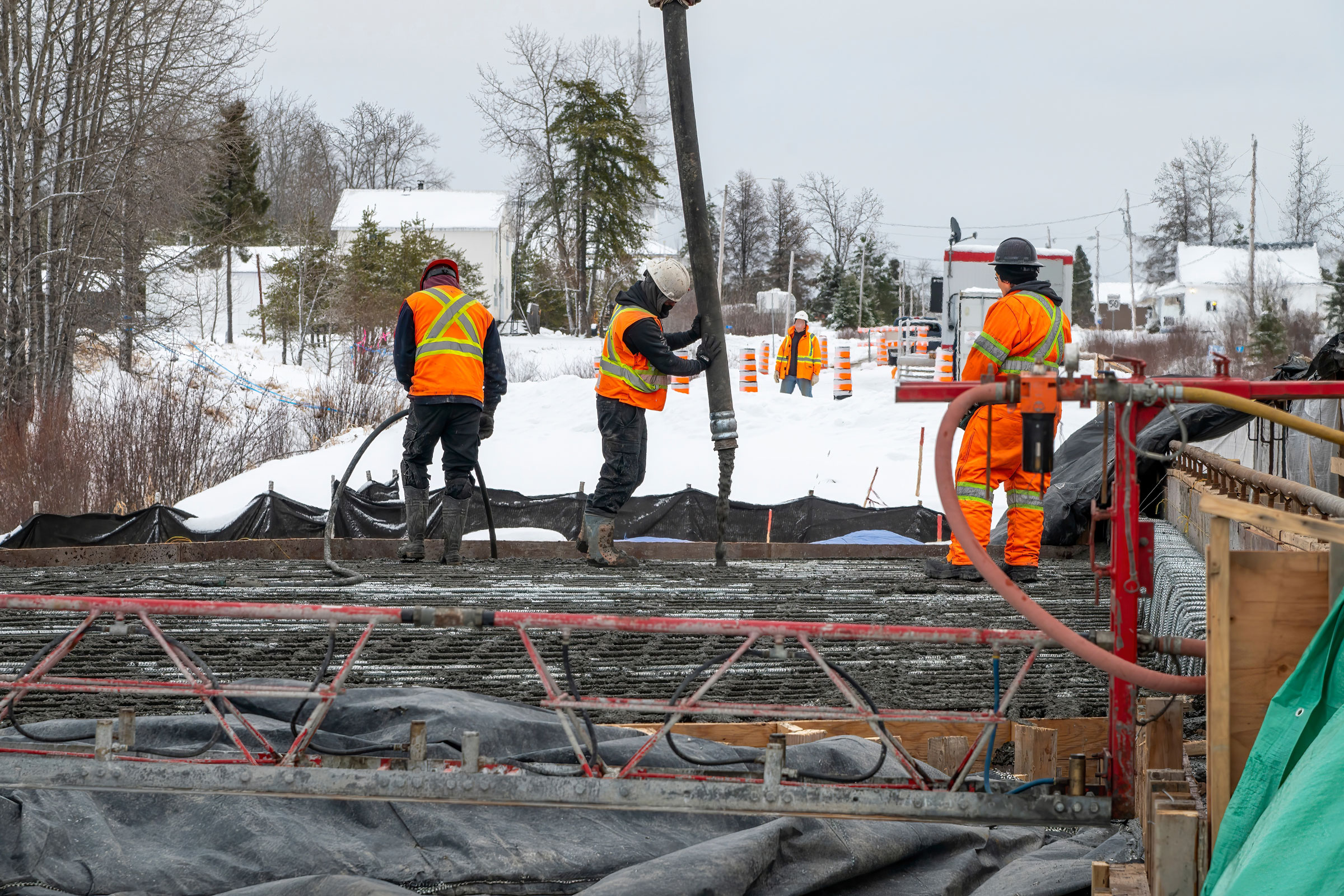Story at a glance:
- A 25,000-square-foot expansion was designed along a new pedestrian spine to give students better access.
- The final design achieved a 10% cost improvement with a 4% reduction in annual building energy consumption.
- Higher education campuses have many opportunities within their infrastructure to enhance students’ lives.
Many Western Carolina University (WCU) alumni have a sentimental attachment to Brown Dining Hall, which served as the heart of campus life in the 1960s. They remember it as the place they fell in love with their spouses and made lifelong friends. However, by 2015 the building was underutilized due to deferred maintenance, serving only as a storage and equipment rental space.
When WCU kicked off its renovation project for the historic building with our team at Watson Tate Savory Architects, now part of McMillan Pazdan Smith Architecture, stakeholders made it clear that a complete demolition was not an option because of the emotional connection many alumni have to Brown Hall.
WCU’s vision for renovating Brown Hall was to foster campus community. The revamped building would provide additional dining options, including brands like Starbucks and Steak ‘n Shake, for the growing student body while serving as a strategic pivot point between the more recently developed lower campus and the historic upper campus.
We knew the structure had great potential, but to make Brown Hall a point of pride for the community and ensure the new building was renowned for its sustainable design, we needed to roll up our sleeves and overcome a number of challenges.
Preserving the Original Structure
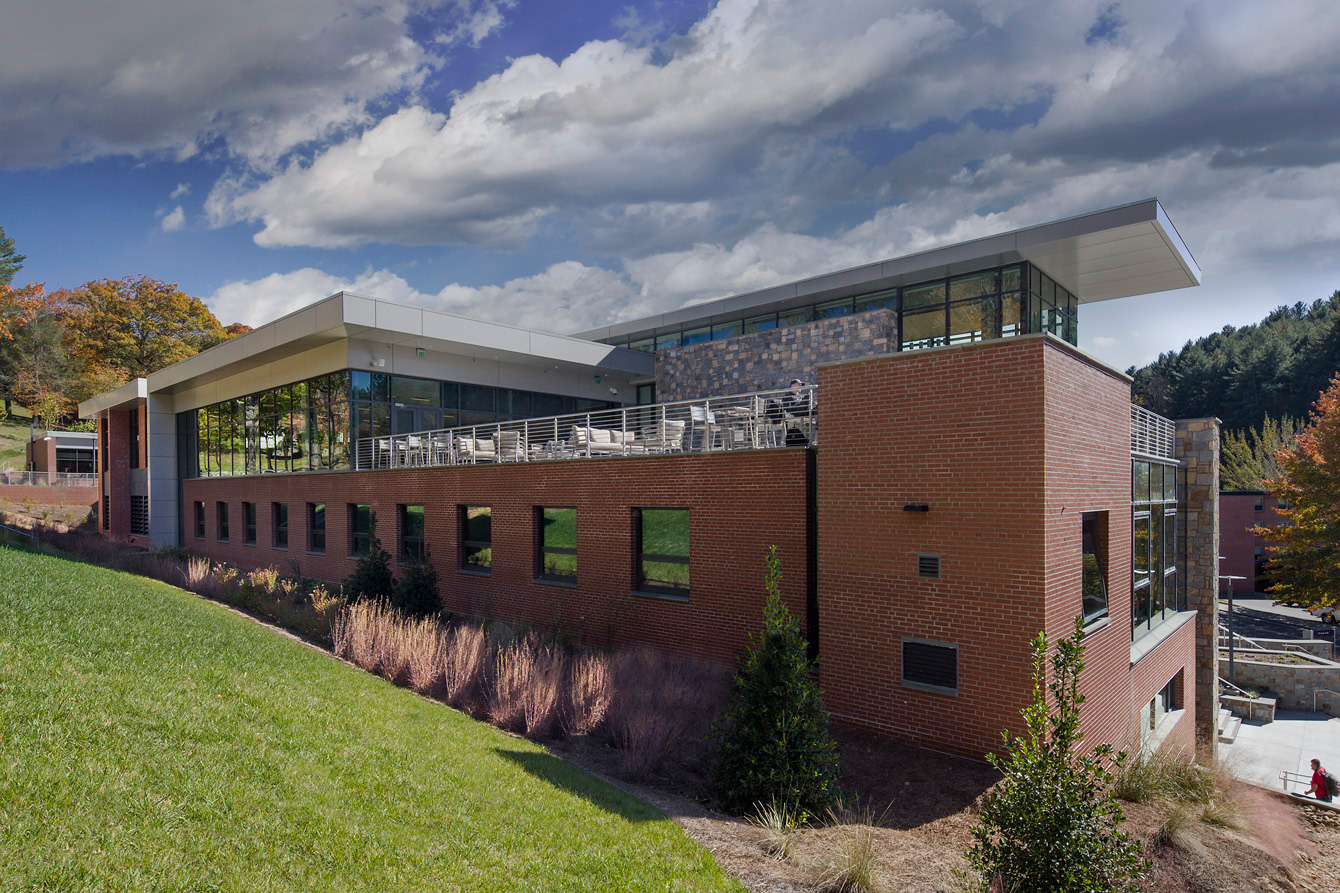
Photo by Gary Matson
As WCU’s campus expanded over the years, Brown Hall’s design was no longer cohesive with its surroundings. Perched on a hillside, the original building faced away from the Great Smoky Mountains, with its solid walls obstructing the potential picturesque views for occupants within the building. Instead, loading docks and mechanical rooms faced the scenery. Steep paths and a circuitous route also made walking between the lower and upper campus difficult and inconvenient as students could not travel through the building on their daily commute.
The decision to reuse and expand the existing building gave us the opportunity to consider how a new design would improve the quality of life on campus and make dining venues and student resources more convenient to access. The 25,000-square-foot expansion was designed along a new pedestrian spine, which created a corridor between the upper and lower campus. The interior was also reoriented to reveal the spectacular mountain views, and more importantly, grant pedestrians entry into the building from either east or west. This strategy achieved the goal of introducing the spaces within the existing building to daylight.
Although the building needed significant structural reinforcement, the McMillan Pazdan Smith team successfully reused 94% of the building’s original structural elements. Of existing materials that were not reused, 98% were recycled.
Thoughtful Material Selections
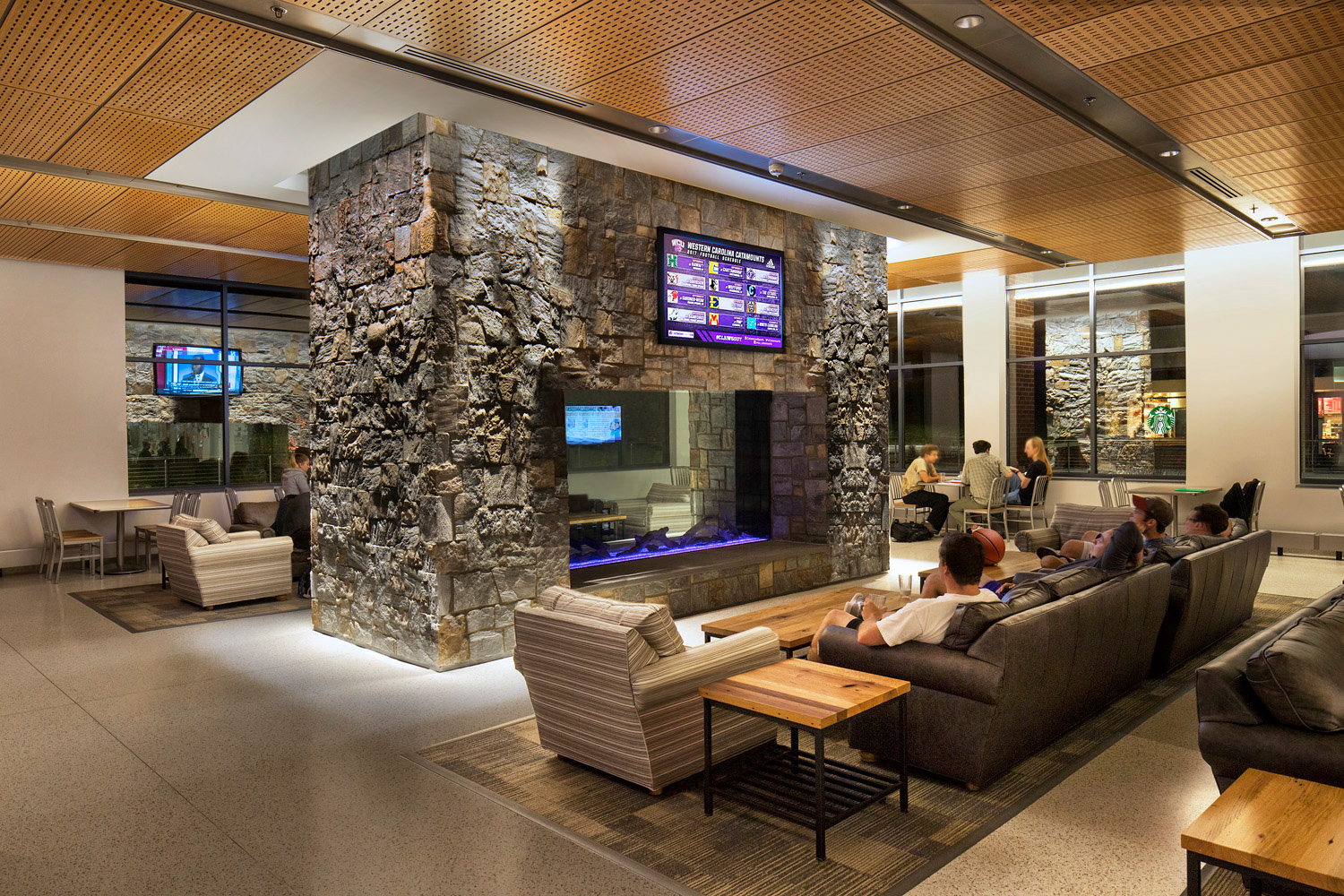
Photo by Gary Matson
To support the university’s culture of ecological responsibility, all building materials were selected with LEED Gold certification in mind. All adhesives, paints, and sealants are low in volatile organic compounds.
Additionally, we selected highly reflective roof surfaces to reduce the heat island effect. Notably, 63% of the hardscape was designed with a minimum solar reflective index of 29.
We designed the spine wall using local western North Carolina fieldstone and terrazzo and completed the landscaping using native and adaptive vegetation.
Energy Efficiency
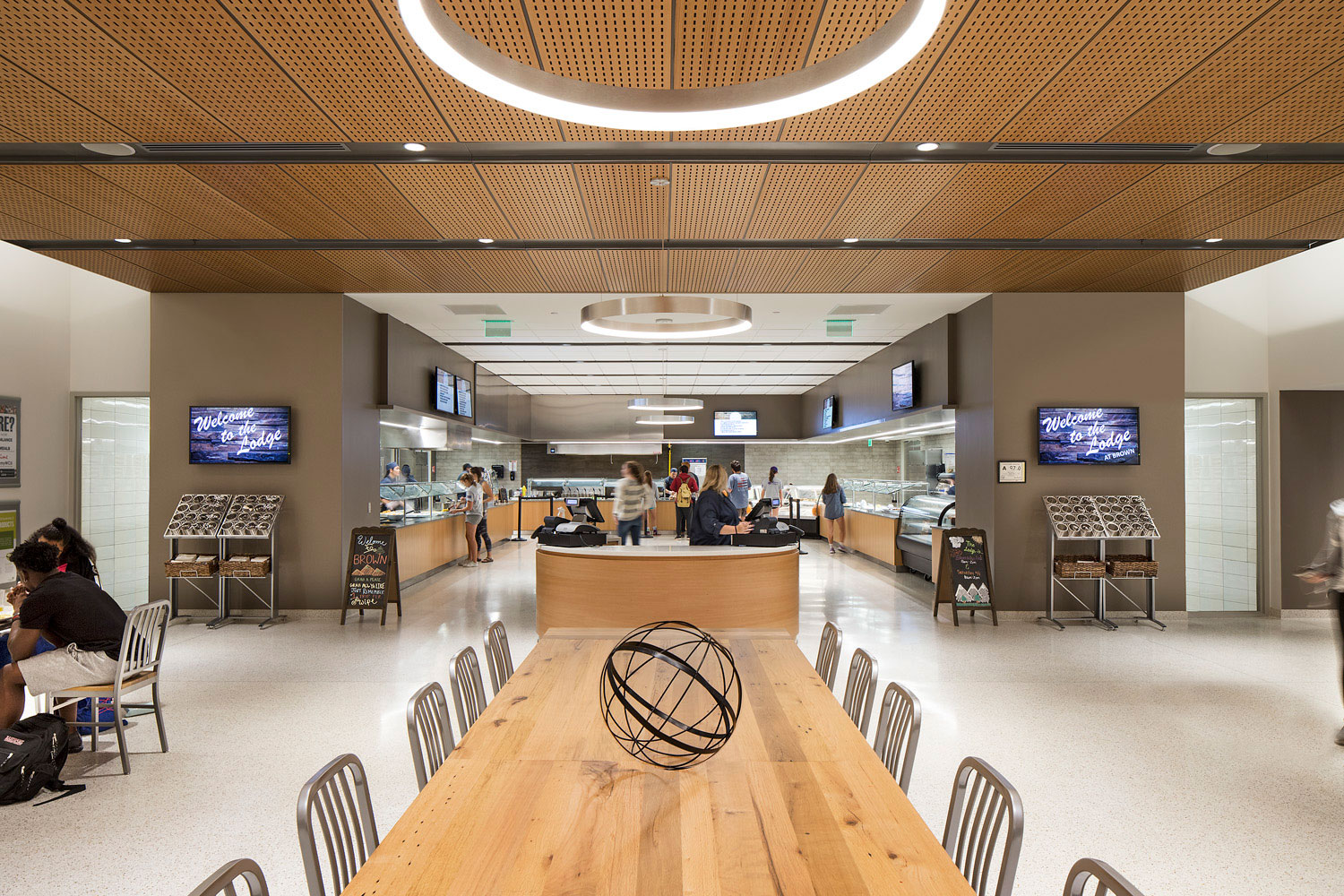
Photo by Gary Matson
With energy efficiency as a primary goal for the renovation, the design team gave special consideration to the many purposes the building would serve. Brown Hall relocated the Residential Living, Campus Services, and Student Community Ethics offices. With the building in use year-round, we leaned on the operations schedule to determine the mechanical, electrical, and plumbing engineering system and predict energy consumption. In total, the final building design achieved an overall 10% cost improvement with a 4% reduction in annual building energy consumption.
The HVAC system is designed to provide control to individual zones that vary in loads. To accomplish this and efficiently address comfort and performance, each zone is provided its own thermostat. The dining hall and main building area consist of a single air-cooled chiller with associated appurtenances, including three air-handling units. Meanwhile, the commercial venues each have an individual ducted split system heat pump. Full economizer controls are provided throughout the system.
The interior lighting is predominantly LED, generating a 23% energy improvement over baseline systems. Altogether, WCU experienced 27.8% energy cost savings with the final design.
Water Efficiency
With the project’s square footage nearly doubling to accommodate a growing campus population, we set out to develop design solutions that would reduce Brown Hall’s overall water consumption, despite the larger footprint. Our team succeeded by using high-efficiency water fixtures and landscaping with native vegetation that would not require irrigation. This resulted in an estimated 42% potable water use reduction compared to the baseline.
Fostering Community
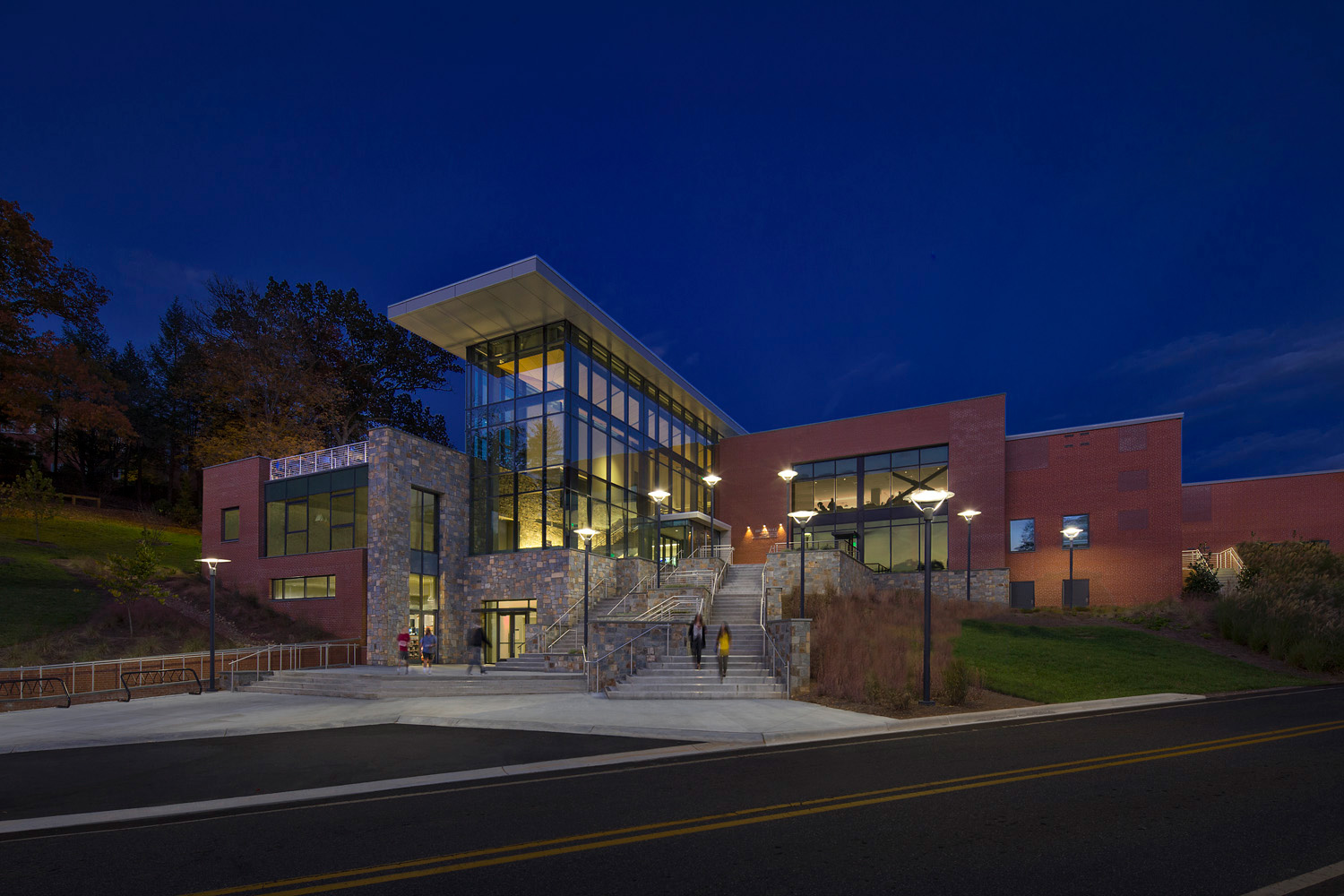
Photo by Gary Matson
Throughout the renovation and expansion, the client’s vision of creating a space where “students come to hang out and happen to eat” remained at the forefront of design decisions.
Not only is Brown Hall at the center of campus, but the consolidation of campus services, student community ethics, and a variety of dining venues under one roof attract students of all backgrounds. Meanwhile, the warm and inviting “lodge on a hill” atmosphere encourages them to stay longer. Whether enjoying panoramic views from Sunset Terrace at the west end, lounging beside the fieldstone fireplace at the north end, or hosting a gathering in the special events dining room, Brown Hall creates endless opportunities for students to relax and connect.
Higher education campuses have many opportunities within their existing infrastructure to enhance the lives of their students and staff—it only requires the right vision. It can be difficult to walk up to an aging building and immediately see its full potential. Western Carolina recognized that buildings have a collective memory and were a visionary and collaborative partner, challenging us to find the potential for Brown Hall’s next chapter. A creative team can see beneath the surface and dedicate time to revealing its hidden qualities. While working through emerging obstacles and thinking outside the box to allow sustainability to be a driving force may be challenging at times, it can be done and done well, as Brown Hall exemplifies.

